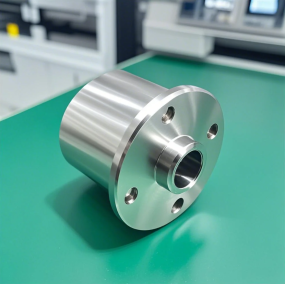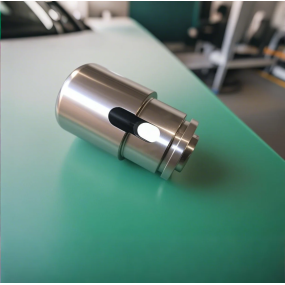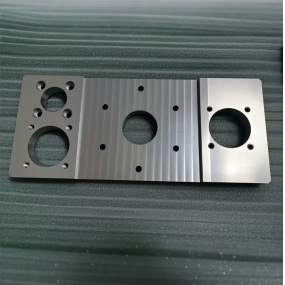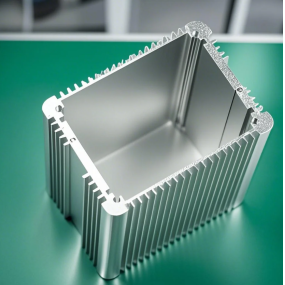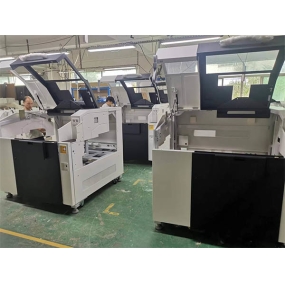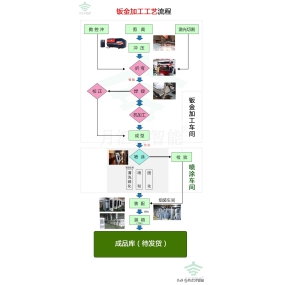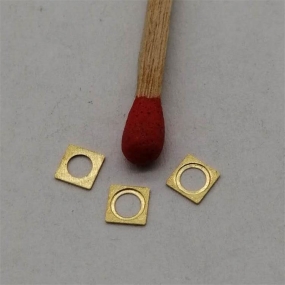CNC machined parts are parts manufactured through computer numerical control (CNC) technology. And it has been widely applied in various industries, such as aerospace, automotive, shipbuilding, medical and other fields. So, let's understand that measurement errors in CNC machined parts may be affected by various factors. Here are some of the main factors: 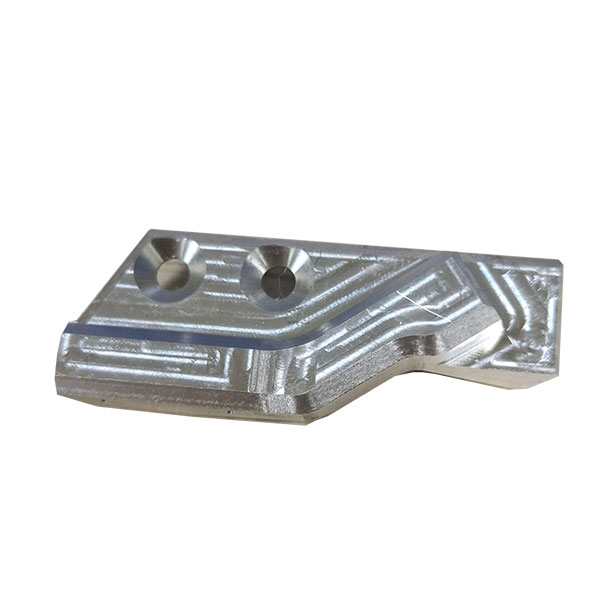 ① Machine tool errors: spindle rotation errors: This includes coaxiality errors in several sections of the spindle neck, various errors in the bearings themselves, coaxiality errors between bearings, and spindle deflection. Guide rail error: The guide rail is the benchmark for determining the relative position relationship of various parts of the machine tool, and its uneven wear and installation quality can also lead to errors. Transmission chain error: Manufacturing and assembly errors of various components in the transmission chain, as well as wear and tear during use, can cause transmission errors Tool error: The tool inevitably wears out during the cutting process, thereby changing the size and shape of the workpiece. The design, manufacturing, and grinding errors of cutting tools will have a direct impact on the machining results Fixture error: The function of the fixture is to make the workpiece equivalent to the tool and keep the machine tool in the correct position. The geometric errors of fixtures have a significant impact on machining errors, especially positional errors Positioning error: This mainly includes baseline misalignment and inaccurate positioning error Error caused by deformation of the process system: Workpiece stiffness: If the stiffness of the workpiece is relatively low compared to the machine tool, tool, and fixture, the deformation caused by insufficient stiffness under the action of cutting force will affect the machining accuracy of the workpiece. Tool rigidity: The rigidity of the tool can also affect machining accuracy. The stiffness of machine tool components: Machine tool components are composed of many parts, and their stiffness also affects machining accuracy Errors caused by thermal deformation in the process system: Thermal deformation is another important factor that leads to machining errors Workpiece material error: The material of mechanical parts may have defects or unevenness during the manufacturing process, such as internal stress, incomplete melting, etc., which can have a negative impact on the processing results Measurement error: CNC Machining centers are mainly affected by the measurement accuracy of measuring tools and the operator's operating methods, resulting in inaccurate measured dimensions Alignment error: During the alignment process, the CNC machining center tool is affected by the feed adjustment ratio value of the operating system when it moves to the starting point position, which can also cause errors. To reduce these errors, a series of measures can be taken, such as improving machine tool accuracy, optimizing tool design, improving fixture design, precise positioning, enhancing process system stiffness, controlling thermal deformation, optimizing workpiece material selection, improving measurement accuracy, and precise control of the cutting process.
① Machine tool errors: spindle rotation errors: This includes coaxiality errors in several sections of the spindle neck, various errors in the bearings themselves, coaxiality errors between bearings, and spindle deflection. Guide rail error: The guide rail is the benchmark for determining the relative position relationship of various parts of the machine tool, and its uneven wear and installation quality can also lead to errors. Transmission chain error: Manufacturing and assembly errors of various components in the transmission chain, as well as wear and tear during use, can cause transmission errors Tool error: The tool inevitably wears out during the cutting process, thereby changing the size and shape of the workpiece. The design, manufacturing, and grinding errors of cutting tools will have a direct impact on the machining results Fixture error: The function of the fixture is to make the workpiece equivalent to the tool and keep the machine tool in the correct position. The geometric errors of fixtures have a significant impact on machining errors, especially positional errors Positioning error: This mainly includes baseline misalignment and inaccurate positioning error Error caused by deformation of the process system: Workpiece stiffness: If the stiffness of the workpiece is relatively low compared to the machine tool, tool, and fixture, the deformation caused by insufficient stiffness under the action of cutting force will affect the machining accuracy of the workpiece. Tool rigidity: The rigidity of the tool can also affect machining accuracy. The stiffness of machine tool components: Machine tool components are composed of many parts, and their stiffness also affects machining accuracy Errors caused by thermal deformation in the process system: Thermal deformation is another important factor that leads to machining errors Workpiece material error: The material of mechanical parts may have defects or unevenness during the manufacturing process, such as internal stress, incomplete melting, etc., which can have a negative impact on the processing results Measurement error: CNC Machining centers are mainly affected by the measurement accuracy of measuring tools and the operator's operating methods, resulting in inaccurate measured dimensions Alignment error: During the alignment process, the CNC machining center tool is affected by the feed adjustment ratio value of the operating system when it moves to the starting point position, which can also cause errors. To reduce these errors, a series of measures can be taken, such as improving machine tool accuracy, optimizing tool design, improving fixture design, precise positioning, enhancing process system stiffness, controlling thermal deformation, optimizing workpiece material selection, improving measurement accuracy, and precise control of the cutting process.
Hello! Welcome to EMAR's website!
 English
English » »
» »
 Spanish
Spanish Arabic
Arabic French
French Portuguese
Portuguese Belarusian
Belarusian Japanese
Japanese Russian
Russian Malay
Malay Icelandic
Icelandic Bulgarian
Bulgarian Azerbaijani
Azerbaijani Estonian
Estonian Irish
Irish Polish
Polish Persian
Persian Boolean
Boolean Danish
Danish German
German Filipino
Filipino Finnish
Finnish Korean
Korean Dutch
Dutch Galician
Galician Catalan
Catalan Czech
Czech Croatian
Croatian Latin
Latin Latvian
Latvian Romanian
Romanian Maltese
Maltese Macedonian
Macedonian Norwegian
Norwegian Swedish
Swedish Serbian
Serbian Slovak
Slovak Slovenian
Slovenian Swahili
Swahili Thai
Thai Turkish
Turkish Welsh
Welsh Urdu
Urdu Ukrainian
Ukrainian Greek
Greek Hungarian
Hungarian Italian
Italian Yiddish
Yiddish Indonesian
Indonesian Vietnamese
Vietnamese Haitian Creole
Haitian Creole Spanish Basque
Spanish Basque


